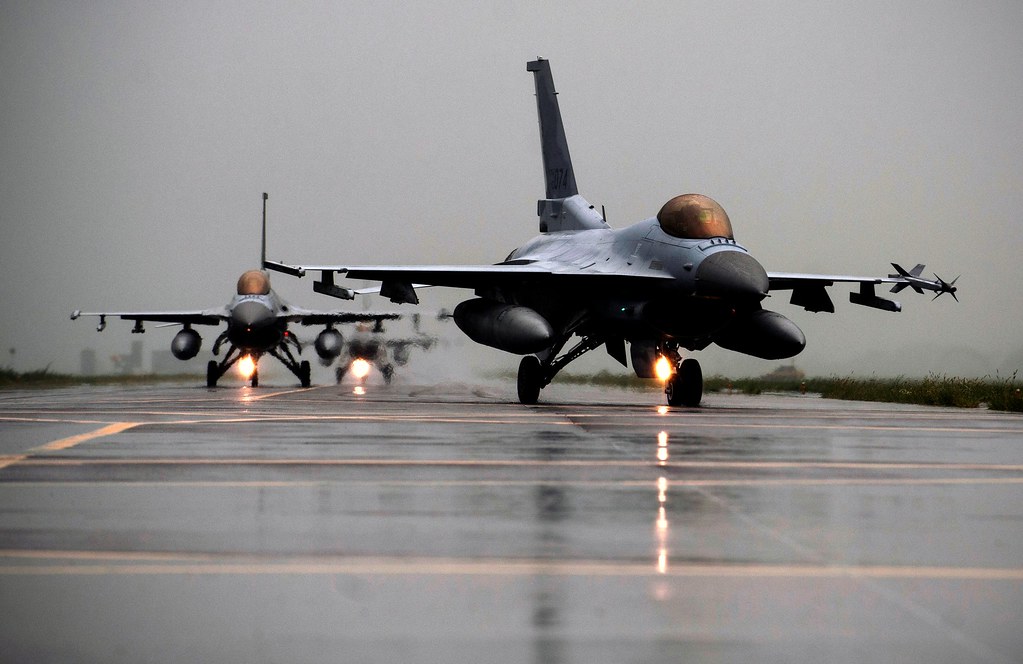The Republic of Korea is hosting joint air drills with the USA and Australia this week, in yet another provocative move against the DPRK. Named “vigilant storm”, the drills come shortly after the RoK’s annual Hoguk exercises, which also saw US involvement. The DPRK has criticised these exercises, highlighting how they are the latest in a series of escalatory moves by the south and their US allies.
Vigilant Storm involves 140 southern planes, and 100 US vehicles, including US stealth fighters based in Okinawa. This week also marks the first time that Australia has been involved in such actions. With the founding of the AUKUS (Australia – UK – USA) security pact last September, it is no surprise to see greater Australian involvement in the western powers’ warmongering. Over 1,600 sorties are planned across the duration of this week.
The DPRK Foreign Ministry criticised these drills in a statement on Monday, October 31, saying, “The U.S.-South Korea joint military exercises, staged on a full scale in April through the “combined command exercises,” were turned into a large-scale field mobile drill, “Ulji Freedom Shield,” in August and then into large-scale joint naval exercises and the largest-ever joint air drill involving a nuclear carrier strike group in September and October. All the facts clearly show that the U.S. nuclear war scenario against the DPRK has entered the final stage.
“That the U.S. describes the DPRK’s self-defensive military counteraction as an act of escalating tension is completely absurd, and this is just like a guilty party filing the suit first…
“The U.S., the one and only country in the world which sets it as a main target of nuclear strategy to ‘topple the government’ of a sovereign state, must be prepared for paying an equal price for its attempt to use military force against the DPRK.”
The ongoing drills have met much opposition from RoK citizens also, with large protests across the south. One such protest, which saw calls for an end to US interference and to the escalation of tensions, achieved a turnout of 500,000 people.
Yoon Suk-yeol, President of south Korea, has been pushing the north to denuclearise, with the announcement of his “audacious initiative” on Korea’s Liberation Day earlier this year. The plan talks about offering the DPRK aid in developing many aspects of its economy if it were to denuclearise, yet this initiative was put forward in the midst of various RoK military exercises involving the USA.
Yoon said at the time, “We will implement a large-scale food program; provide assistance for power generation, transmission and distribution infrastructure; and carry out projects to modernize ports and airports for international trade. We will also help enhance North Korea’s agricultural productivity, offer assistance to modernize hospitals and medical infrastructure, and implement international investment and financial support initiatives”
Such offers seem like very little when one is asking the north to sabotage its own security, against a state that continues to threaten it with military action. Never mind the fact it is not some personal failing in the citizens of the DPRK that has left them wanting for better developed infrastructure, or a greater abundance of food. It is the economic warfare waged by the USA on the DPRK through its sanction regime, the same USA which Yoon is currently cooperating with on Vigilant Storm.
Kim Yo Jong criticised this initiative back in August, saying “All cannot be bartered. To think that the plan to barter ‘economic cooperation’ for our honour, nukes, is the great dream, hope and plan of Yoon, we came to realize that he is really simple and still childish.
“He, who came to power, would take two or three years to know well the law of the world and the situation while working hard.
“No one barters its destiny for corn cake.”
Amidst this week’s exercises, both the north and south have made a show of force through missiles. On Wednesday 2 November, the DPRK fired 23 missiles into the sea in the border area with the south, on both the eastern and western sides of the peninsula. The RoK then retaliated, firing its own missiles into the same area.
Also on Wednesday, the DPRK fired 100 artillery shells at an eastern maritime buffer that the Korean governments had established in 2018. The RoK then retaliated by sending three missiles to the same area.
Mia English, is the News Editor of Challenge



